Luna moths are large, beautifully colored insects. They have bright green wings and white, fuzzy bodies. Their large wings have long “tails” that sprout from the base, giving them a unique, elegant appearance. Most Luna moths are about four or five inches across, but some specimens can be larger than seven inches! Read on to learn about the Luna moth.
Description of the Luna Moth
These insects are quite large, and some Luna moths can have a wingspan of seven inches or more. The wings are bright green in color, sometimes with a bluish tint, and sometimes with a yellowish tint.
The wings have two sections, the larger forewing, which is closer to the head; and the smaller hind wing, which is closer to the rear. Each wing has two eyespots, one on the forewing and one on the hind wing. The eyespots are oval shaped, and can be black, blue, white, green, red, or yellow.
Interesting Facts About the Luna Moth
These beautiful moths are actually incredibly interesting. They have a number of useful adaptations and odd traits.
- Eyespots – Like many moths and butterflies, Luna moths have eyespots on their wings. Eyespots are round marks on the wings that resemble eyes. Scientists believe these eyespots can confuse or deter predators, which may think the animal is larger than it actually is based on the size of the “eyes.”
- Wing Tail – Instead of having perfectly rounded wings, Luna moths have long protrusions that extend from each rear wing. In addition to their aesthetic appeal, these wing tails actually serve a purpose. Scientists believe the wing tails disrupt the echolocation of bats, one of the more skilled predators of Luna moths.
- Mouth Off – Even though, upon close inspection, you can see mouthparts on these moths, they serve no purpose. These mouthparts are vestigial, which means that they might have had use sometime in the past, but serve no purpose now. Once they evolve into the “adult” form, Luna moths do not feed.
- Luna Lifecycle – Like most butterflies and moths, this species undergoes metamorphosis to achieve its final shape. The female lays eggs, which hatch into larvae. These larvae will feed on leaves, and undergo five different molts as they grow larger. After their final molt, the larvae spins a cocoon out of silk and enters the pupae stage. Finally, after they transform in the pupae stage, the moth emerges as an imago, or its final adult form.
Habitat of the Luna Moth
These moths do not require a specific feeding area as an adult, because they do not eat! However, they will seek certain areas that house preferred species of plants when they lay their eggs.
In different regions Luna moths will prefer different plant species to lay their eggs on. The larvae will feed on white birch, hickory, sweet gum, persimmon, walnut, and sumac leaves. Not all larvae can feed on all of those plants, and some regions can only survive on a single species of plant.
Distribution of the Luna Moth
This moth species dwells only in North America. They live as far west as the Great Plains, and as far east as the coast of the Atlantic Ocean. In the United States one might find them from Maine, all the way down to Florida. In Canada, they live from Nova Scotia to Quebec and Saskatchewan. These moths live nowhere else in the world.
Diet of the Luna Moth
Adult Luna moths do not eat at all, as their mouthparts are non-functional. The only time these insects eat is during their larval stage. As discussed above, larvae from different regions will feed on different plants.
Some regions can feed on certain plants that larvae in other regions cannot, and vice versa. The plants regional larvae can eat are called host plants. Different host plants include persimmon, white birch, hickory, sumac, walnut, sweet gum, and more.
Luna Moth and Human Interaction
Luna moths and humans do not directly interact very frequently. Most human interactions occur when human-produced light sources attract moths. There are few negative interactions, as Luna moths do not conflict with humans in any way. This species is the only moth to appear on a United States postage stamp, and is generally regarded as a beautiful creature and not disliked by anyone.
Domestication
Humans have not domesticated Luna moths in any way.
Does the Luna Moth Make a Good Pet
Luna moths do not generally make good pets. Handling them can damage their wings, so they are a hands-off pet. You can raise the larvae if you know what type of host plant they require, but you should release the adult moth so it can reproduce with its own kind.
Luna Moth Care
In a zoological or household setting, these moths are simple to care for. The larvae require the right species of plant for feeding, and the adults do not feed at all. Because different regions have different host plants, it is important to do your research before attempting to keep Luna moth larvae. You can sometimes see them in butterfly habitats, but they do not feed on flowers.
Behavior of the Luna Moth
The behavior of this species is relatively simple. The eggs hatch, and the primary purpose of the larvae is to eat, and eat… and eat… and eat! Once they go through their pupae stage and emerge as an adult, the primary purpose of this insect is to reproduce. They no longer feed, and will release hormones to attract a mate. On average, the adult form lives only 7 – 10 days.
Reproduction of the Luna Moth
Male Luna moths have large antenna that help them detect the pheromones of females. The antennas are so impressive that they can detect a female from over a mile away. After mating, female moths lay between 200 and 400 eggs. She lays the eggs one by one, or in small groups, on the leaves of the preferred host plant. After about a week the eggs hatch, and the larvae begin eating.


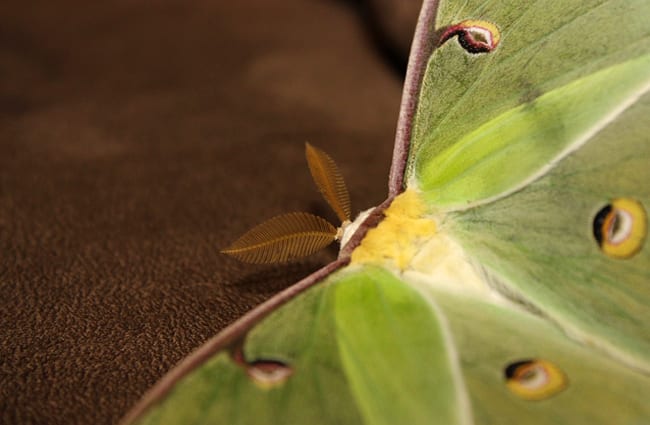
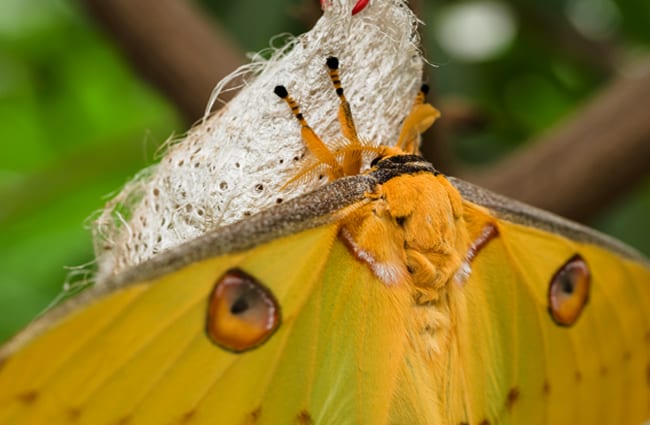

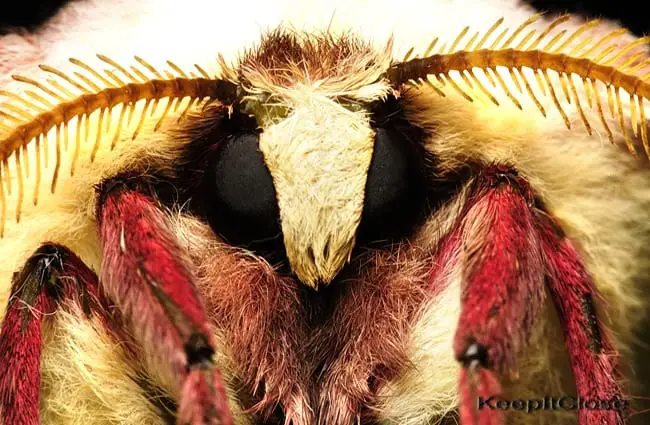

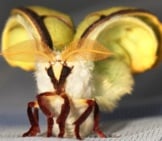

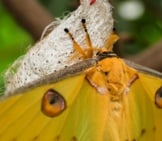
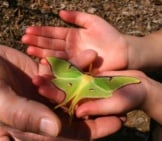



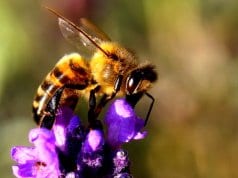
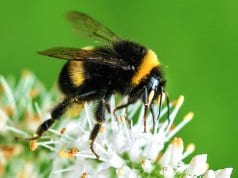










![Red Angus Closeup of a beautiful Red Angus cowPhoto by: U.S. Department of Agriculture [pubic domain]https://creativecommons.org/licenses/by/2.0/](https://animals.net/wp-content/uploads/2020/03/Red-Angus-4-100x75.jpg)

